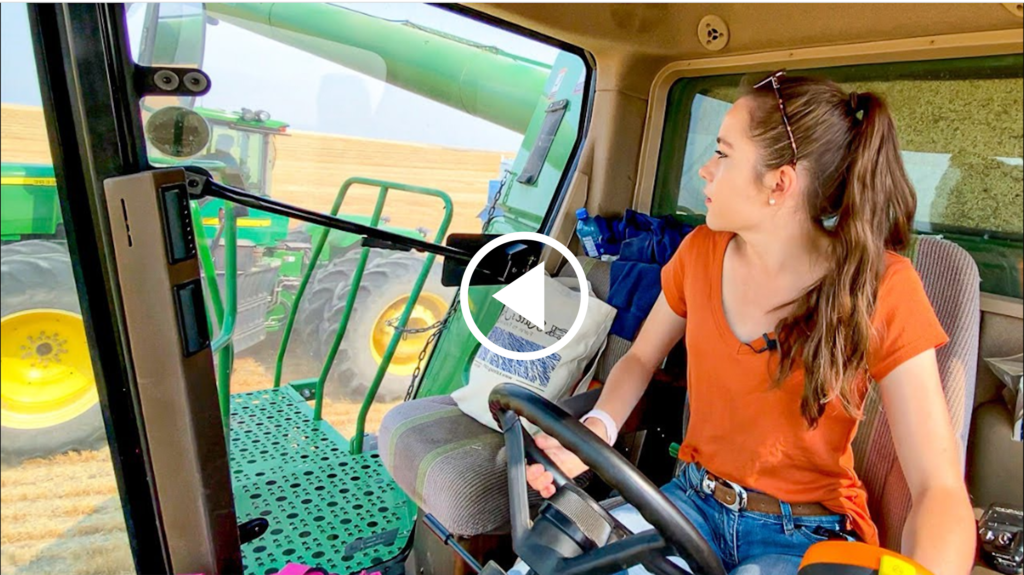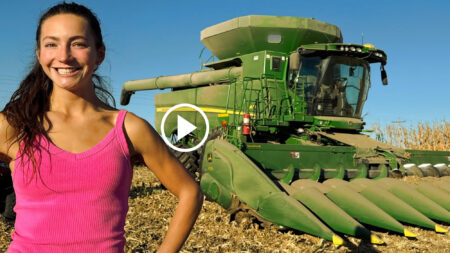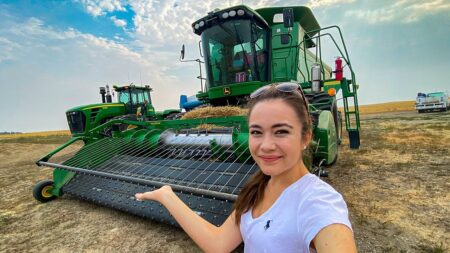Wheat harvesting is a crucial stage of agriculture which involves harvesting the ripe wheat ears to obtain wheat grains from them. This operation generally takes place in late summer or early fall, depending on climatic conditions and geographic region. Wheat harvesting is an ancient agricultural practice that has evolved over the centuries thanks to technological advances, from manual harvesting to the use of modern machinery. In this article, we will explore in detail the process of harvesting wheat, the tools and techniques used, and the economic and dietary importance of this crop.
Preparing the Land: Before beginning harvest, farmers prepare the land by sowing wheat seeds in late fall or early spring. The seeds germinate and form wheat plants that grow throughout the season.
Growth of wheat: Wheat goes through several stages of growth, from germination to the formation of ears. During this period, farmers monitor the health of crops, protect them from diseases and pests, and ensure their nutrition by using fertilizers if necessary.
Maturity of wheat: The wheat harvest can only take place when the ears are ripe, that is to say when the grains are sufficiently dry and hard. Maturity varies depending on the variety of wheat and climatic conditions.
Choice of harvesting tools: There are several methods for harvesting wheat. Traditionally, harvesting was done by hand, with sickles or scythes. However, this method has become obsolete in many parts of the world, replaced by modern agricultural machinery such as combine harvesters. These machines are capable of cutting the cobs, separating the grains from the straw and storing them in an integrated tank.
Mechanized harvesting: Combine harvesters are powerful machines that greatly simplify the harvesting process. They are generally driven by an operator who controls the machine and monitors the quality of the harvest. Modern combine harvesters are equipped with GPS navigation systems to maximize harvesting efficiency.
Temporary storage: After harvest, wheat grains are temporarily stored in the harvester or in trailers attached to the machine. It is essential to minimize grain loss during transportation to the farm or storage facility.
Drying and cleaning: Once the grains are harvested, they must be dried to reduce their moisture content to a safe level for long-term storage. Next, the grains are cleaned to remove impurities, such as chaff, dust and debris.
Long-term storage: Wheat grains are then stored in silos or warehouses for long-term preservation. It is important to maintain proper storage conditions, including controlled temperature and humidity, to prevent grain deterioration.
Use of Wheat: Once stored, wheat can be used for a variety of food products, such as flour for making bread, pasta, cakes and other baked goods. Wheat is also used in animal feed and the production of other products such as beer or whiskey.
Economic and food importance: The wheat harvest is of crucial economic importance in many parts of the world. It constitutes a source of income for farmers and a staple food for many populations. Wheat is one of the most widely grown grain crops in the world, and its harvest contributes to global food security.
wheat harvesting is a complex and essential process in modern agriculture. Thanks to technological advances, it has become more efficient and productive, helping to meet the growing food needs of the world’s population. The wheat harvest also represents a major part of the agricultural economy and plays a crucial role in global food security.















2 Comments
Hello dear, where are you and what are you doing? Help me
Am interested in farm jobs please